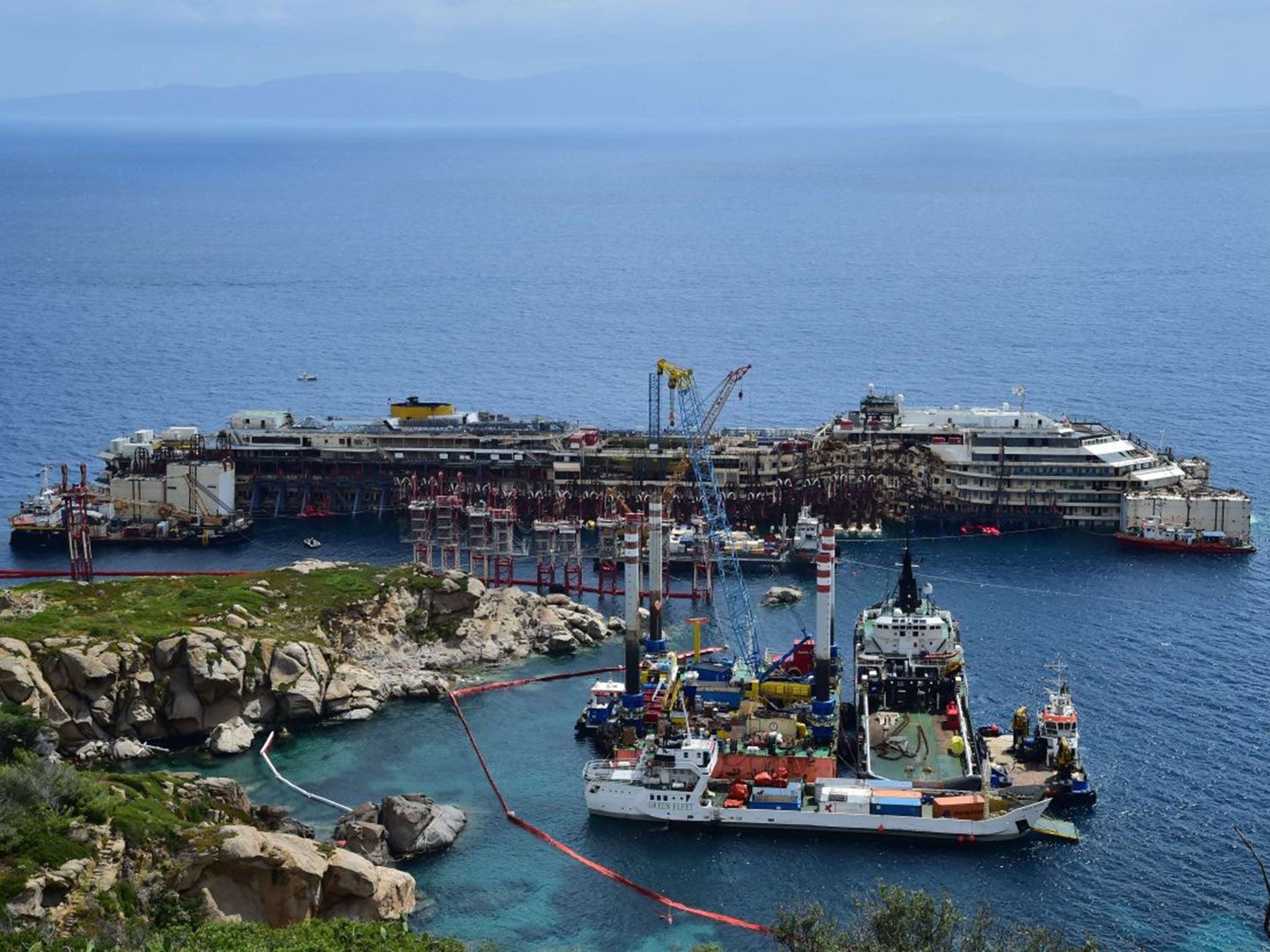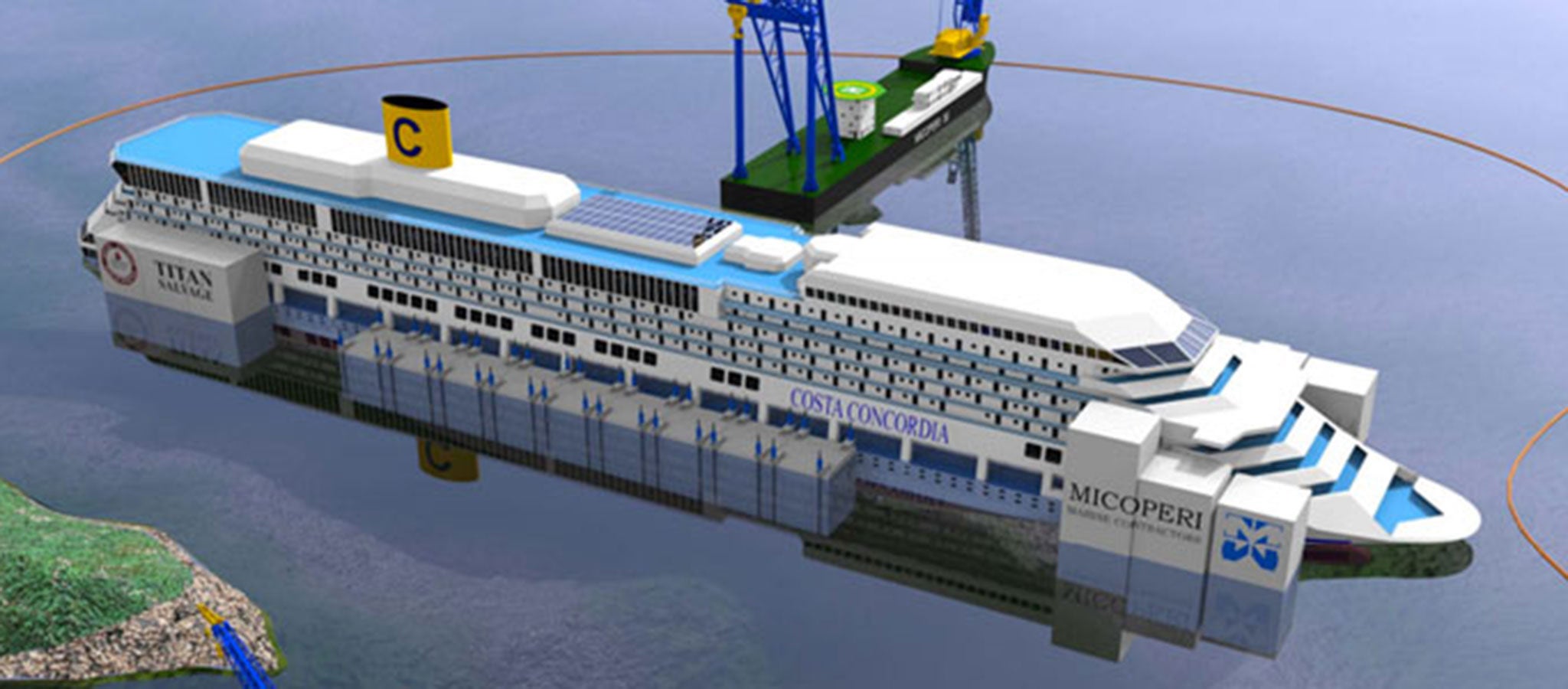Costa Concordia raised: How engineers are going to float the capsized cruise ship
It has remained on the Italian coast since 32 people died when it capsized in 2012

Your support helps us to tell the story
From reproductive rights to climate change to Big Tech, The Independent is on the ground when the story is developing. Whether it's investigating the financials of Elon Musk's pro-Trump PAC or producing our latest documentary, 'The A Word', which shines a light on the American women fighting for reproductive rights, we know how important it is to parse out the facts from the messaging.
At such a critical moment in US history, we need reporters on the ground. Your donation allows us to keep sending journalists to speak to both sides of the story.
The Independent is trusted by Americans across the entire political spectrum. And unlike many other quality news outlets, we choose not to lock Americans out of our reporting and analysis with paywalls. We believe quality journalism should be available to everyone, paid for by those who can afford it.
Your support makes all the difference.The Costa Concordia will float once more on Monday if an operation to raise the luxury liner from the seabed is successful.
The salvage operation for the 290-metre ship has been the biggest in history and is drawing to a close with plans to tow it to Genoa to be broken up for scrap.
Thirty-two of the 4,200 passengers and crew members died when the vessel crashed into the rocks on the island of Giglio in January 2012 and two victims of the disaster have never been found.
Eerie footage taken by divers inside the wreck showed shoes, books and pillows strewn about the deck and computers still sitting neatly on desks in the strangely perfect reception area.
Smashed doors and destroyed seating areas are evidence of its fatal capsizing into the reef.
The cruise liner has remained on the Italian coast where it sank but was moved upright in a successful parbuckling operation last September.
The hull is currently resting on a false bed created at a depth of about 30 metres.
A pneumatic system will be used to pump water gradually from 30 caissons (airtight tanks) surrounding the wreck, filling them with air and pushing the vessel upwards.
Engineers will float a small section at first to check for structural damage. If the Costa Concordia cannot be moved in one piece, it will have to be dismantled where it is.
The prospect has prompted criticism from Greenpeace and other groups concerned about rubbish and debris polluting the surrounding Mediterranean.
If the structure is safe, the ship will be moved 30 meters away from shore before being gradually refloated.
Each of the 13 decks will be examined as they emerge for any hazards that could seep into the ocean.
When the process is finished, a section of about 18 metres will remain submerged and the 114,500-tonne vessel will be tugged at a steady two knots to Genoa on a four-day journey over 190 nautical miles.

It will be escorted by several other vessels and a team of marine biologists will be ready to intervene if any problems arise.
A consortium including oil services group Saipem and the Genoa-based companies Mariotti and San Giorgio will carry out the dismantling.
Michael Thamm, chief executive of Costa Cruises, said all the company’s energies were focused on the “successful conclusion of this unprecedented engineering challenge to respect a precise commitment - to remove the Concordia wreck as soon as possible, in compliance with the highest environmental and safety standards”.
The ship's captain, Francesco Schettino, is on trial accused of manslaughter, causing a shipwreck and abandoning ship.
Subscribe to Independent Premium to bookmark this article
Want to bookmark your favourite articles and stories to read or reference later? Start your Independent Premium subscription today.
Join our commenting forum
Join thought-provoking conversations, follow other Independent readers and see their replies
Comments